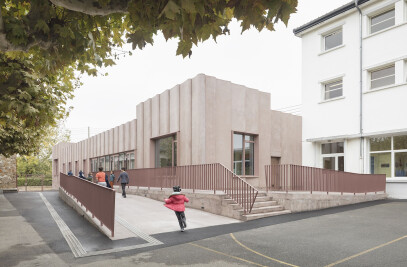The Orly area, known primarily for its airport activities, is above all an inhabited district. The ambition of the programme is to offer Orlysians a new festive and multi-purpose space on the edge of the airport and the city. The site seems to be a place apart, belonging both to the great airport landscape and to the intimacy of this fringe of the city, made up of a suburban fabric and logistics buildings. Facing the runways, the land forms a promontory around which a busy road winds its way downwards, leaving direct views towards the distant bustle of the runways. Between a pavilion and a string of logistics sheds, the new village hall asserts itself, through its design and construction, as a festive shed. Halfway between a low-cost prefabricated industrial structure and an ordinary house, the building unfolds in two cubic volumes of the same dimensions, which attempt to move away from the typology of the shed to approach the domestic scale of the house.
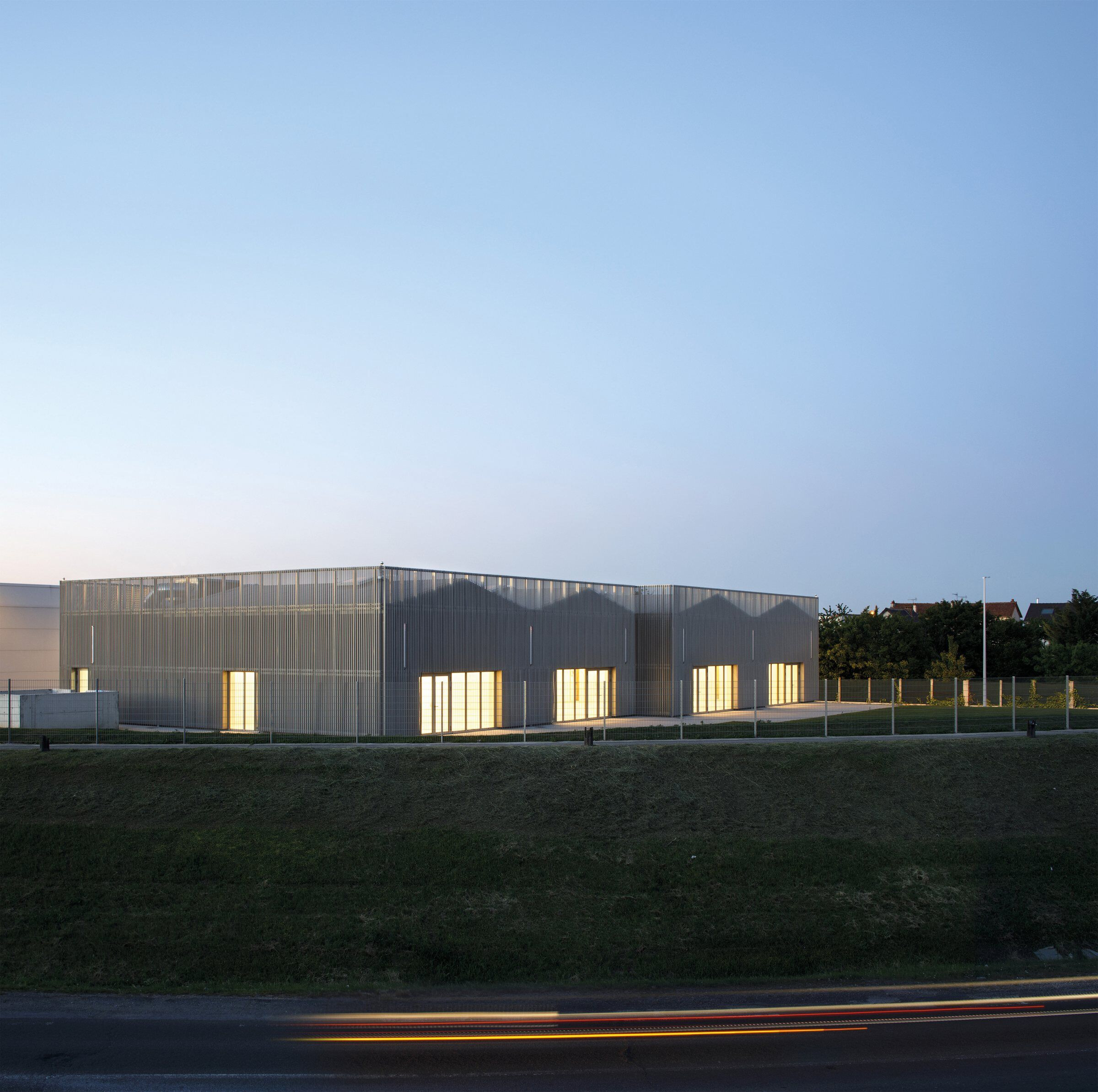
Two readings of the building are offered at distant and close views by a play of imbrications and materialities between the volumes of the rooms, which take up the typology of the gabled house, while the cubic metal envelope responds to the contiguous industrial sheds. The building’s structure, designed entirely in timber frame, forms a simple, capable volume, topped by an eight-sided folded roof. The alternation of porticos and wooden beams imparts rhythm to the interior of the rooms, revealing the building’s constructive system. This is complemented by timber frame walls and structural timber roof panels, which are also left visible. Deep beam drops cross the spans and guide the movable walls to form real acoustic alcoves while offering a vast continuous floor space.

The metal cladding of the façade’s complex extends beyond the building volume and gives the ensemble its public and institutional dimension, allowing the village hall to reinforce its presence in this suburban landscape. Through its champagne colour, its undulations and perforations, the thermo-lacquered, corrugated iron cladding offers a changing and renewed image of the facility through the play of reflections and transparency. Depending on the light, the distance and the viewpoint, which is multiple on this angled plot, the building creates a real kinetic effect.
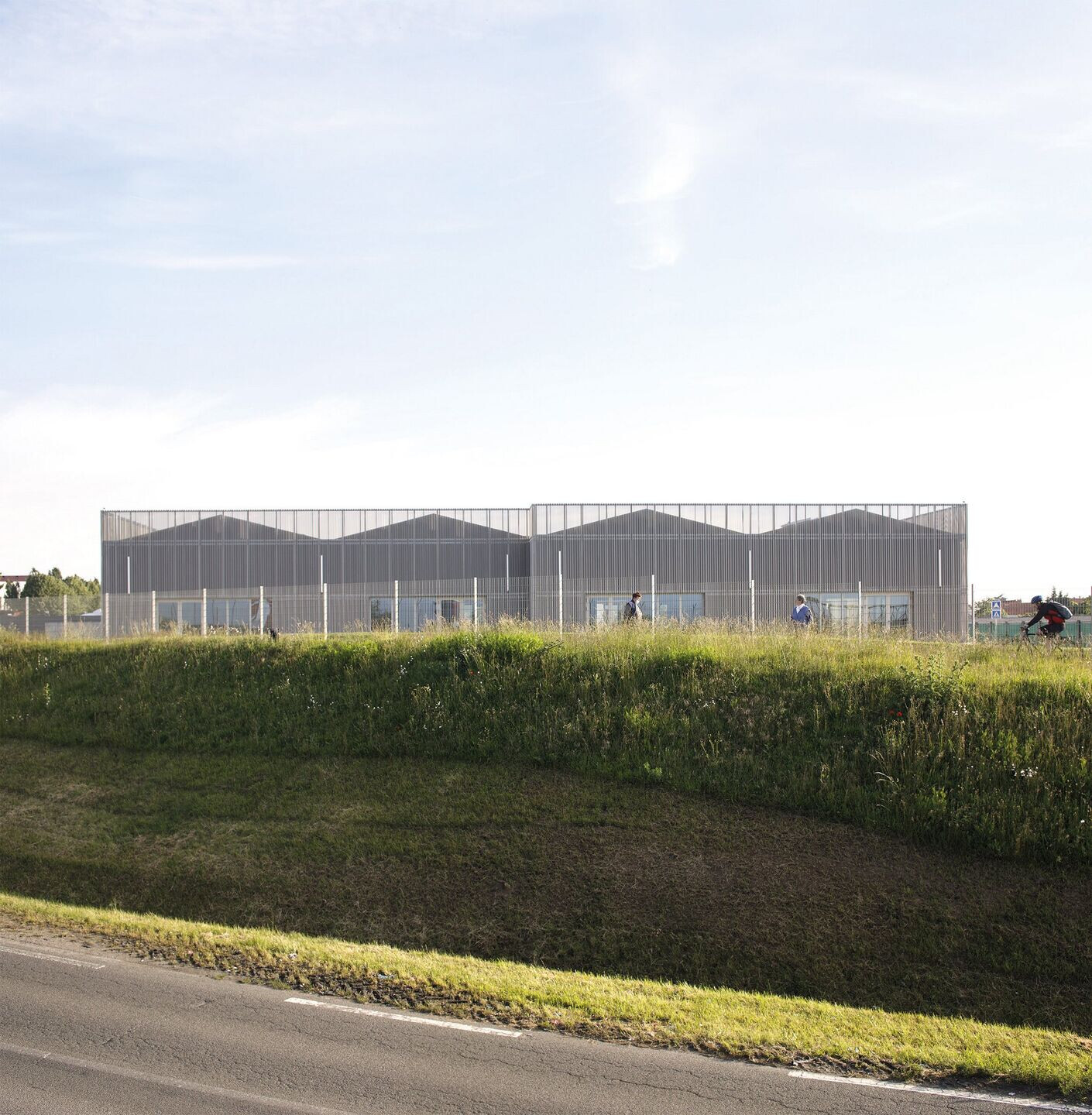
In order to adapt to the particular shape of the quarter-round plot and to fit in with the airport’s easements, the two volumes making up the building open out to form a sheltered entrance on the north façade. The building is organised around a large convivial space which can be modulated according to the needs of its occupants, by dividing it into two or three rooms with mobile acoustic walls. These three adjoining rooms are spread out along a service strip housing the entrances, the sanitary facilities, the offices, a management office and the technical premises; this is positioned on the north façade of the facility in direct contact with the car park and the entrance square.

The convivial spaces open to the south through four large horizontal piercings that frame the runways while allowing controlled natural light. They are completed by two lateral openings, as well as by vents positioned at the level of the four wood-panel gable roofs, allowing for zenithal light. The lighting and acoustic baffles positioned along the wooden porticos accompany the folds of the roof, enhancing the interior spaces. Thus, the interior volumes, the diffuse natural light and the exposed wood impart a warm and domestic atmosphere to the rooms, breaking with the «industrial» context to which the metal envelope refers.
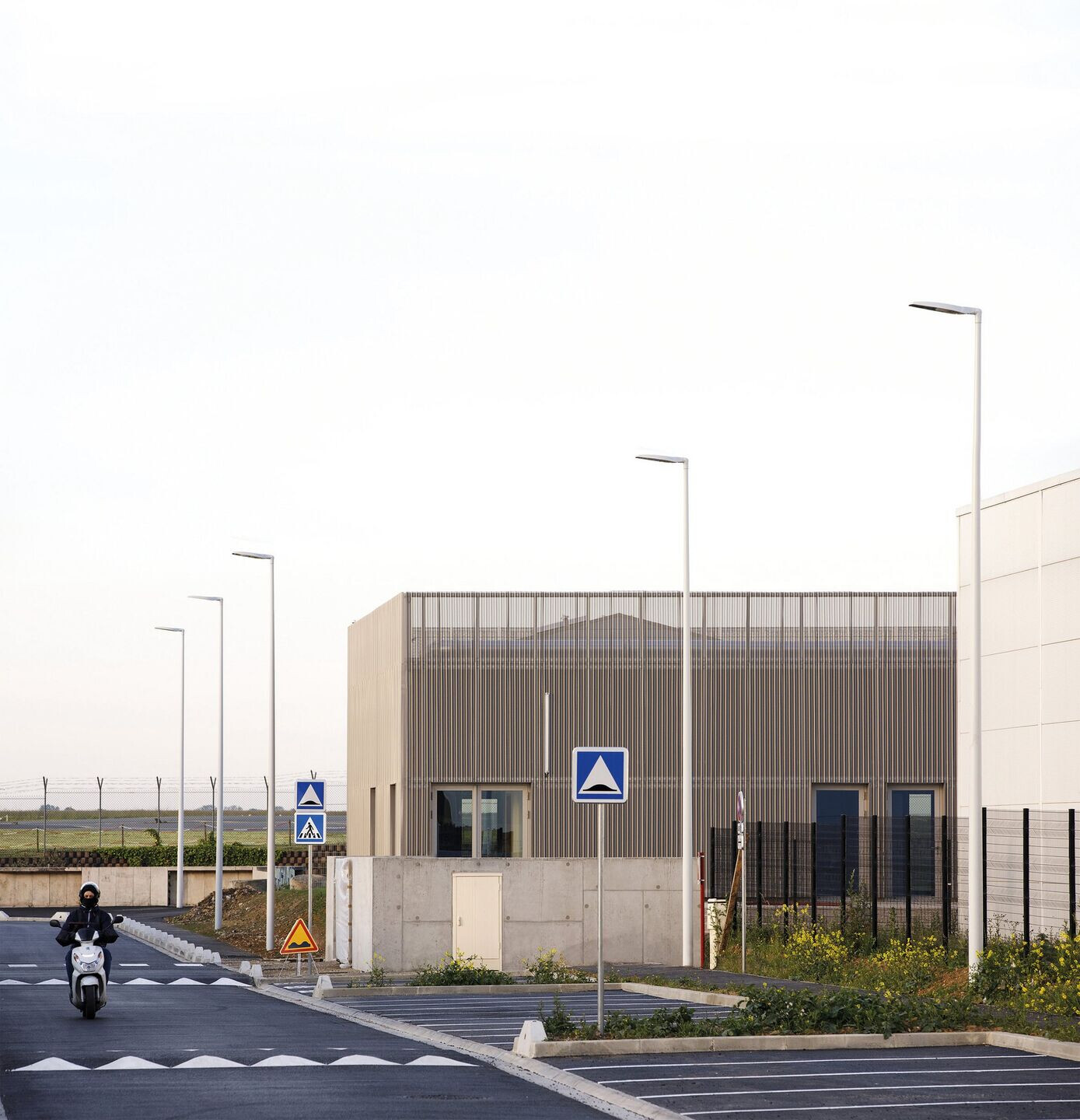
The quartz concrete floor of the halls is an extension of the light- deactivated concrete used for the forecourt and the terraces, indicating the pedestrian status of these spaces. The construction of the new festival hall is also an opportunity to improve the neighbourhood’s network by redefining the profile of Rue Parmentier, integrating parking spaces and enhancing the soft paths along the facility. Designed through a grammar constrained by a strong economy of means (less than 1900 €/m²), the new Orly festival hall remains generous in its uses and its operation, which will allow the municipality to host multiple events on a site with emblematic territorial links for Orly.
Team:
Graal (architect, cost management, PCC)
LM (structure)
Sunsquare (fluids)


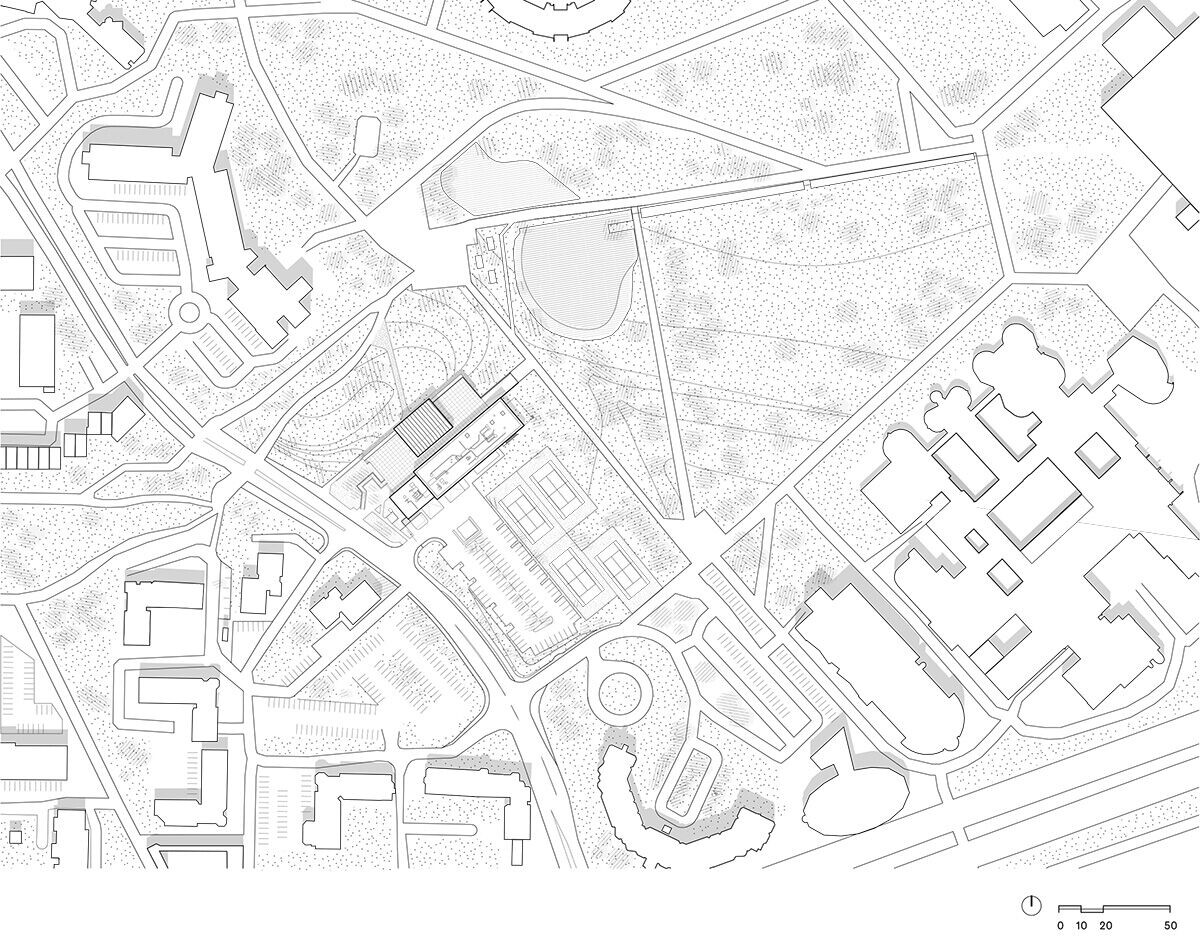


Material Used:
Destas-Crieb (major works)
Girard Ouvrages Bois (timber structure)
Ciel Etanchéité (waterproofing)
Plastalu (external joinery)
Sorbat (plasterwork, internal joinery)
DG Peinture (coatings, painting)
BSMG (plumbing, heating, ventilation)
Afilec (electricity, sound system)


























